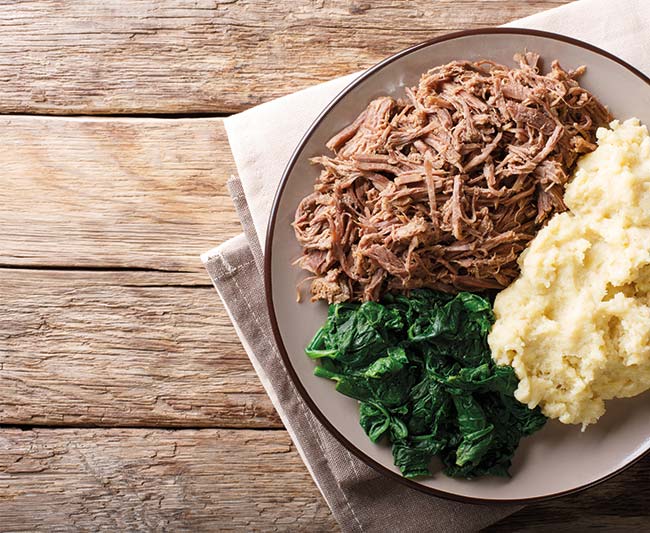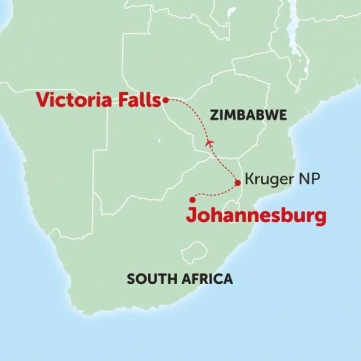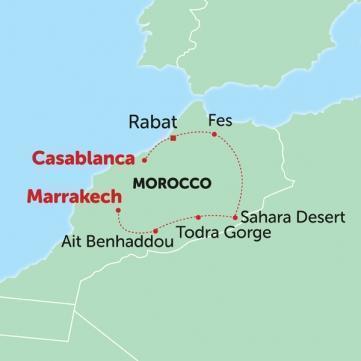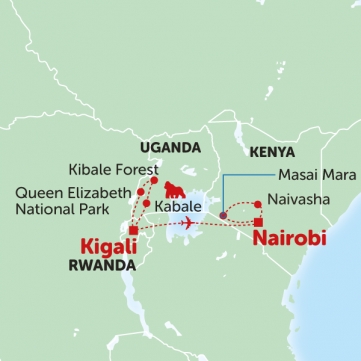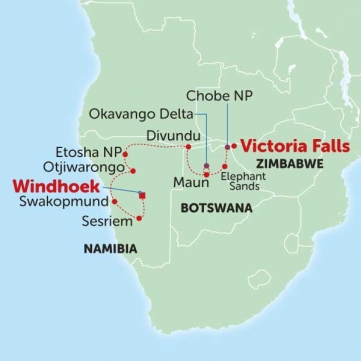Book NOW for $1 £1 €1 • Flexible Payments • No Change Fees • Private Departures Available
- Home >>
- Food and drink in Africa
Food and drink in Africa
Given its vast scale, the difference in cuisine between some African nations is substantial. There is a theme of basic carbohydrate and meat combinations running through the continent, but this is far from the only thing that you will taste when exploring Africa. In the north are masters of spice in countries like Morocco, whose cuisine is now world renowned. To the south the influences of a fusion of cultures can be seen - and tasted - in each nation’s classic dishes. Towards the coastal regions are the freshest fish dishes, whilst inland settlements will offer the opportunity to taste game meats that you would not find elsewhere. The food in Africa is as varied as the almost countless cultures that call this continent home.
.
Botswana
Like many of Africa’s local specialities, the national dish of seswaa is based on a simple but masterfully prepared meat and carbohydrate combination. Seswaa is made by simmering goat, pork or lamb with onion and pepper on a low heat until it is sufficiently tender. The meat is then shredded and served with polenta. Seswaa is often served with a side of morogo, a spinach-like vegetable, for the ultimate traditional Botswana meal. Another local favourite comes in the form of matemekwane - small dumplings stuffed with all manner of different vegetables and meats. Bogobe is a good choice for any vegetarians visiting Botswana. A combination of peas, pulses and maize creates a savoury porridge-like meal that is as delicious as it is filling. Bogobe can also be eaten in a sweet form for breakfast, when combined with wild melon.
Something different: Mopane. A dish that proves unappealing to most and it is easy to see why. Mopane are large grub-like worms that are fried and eaten as a snack. An excellent source of protein and a real opinion splitter.
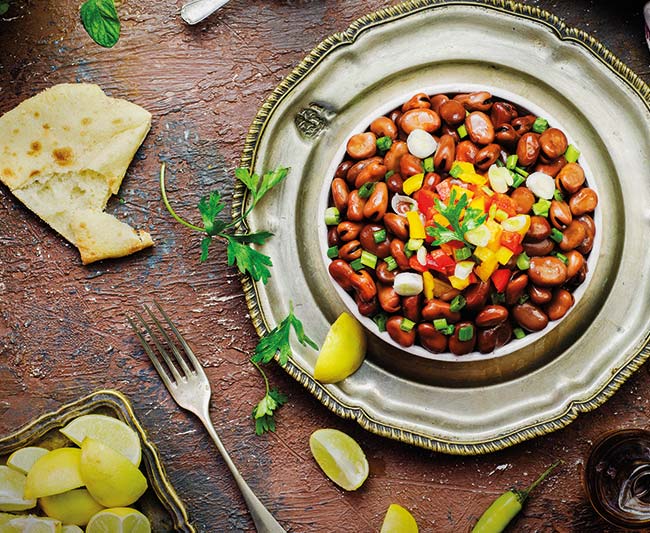
Egypt
Egyptian food has a very Middleastern feel to it, with influences from neighbouring nations and a generous use of spice in most of the nation’s favourite dishes. Ful medames is a classic breakfast stew consisting of beans, lemon juice and an array of local herbs that give this hearty meal a delicious flavour that will have you mopping up the remains with your side of flatbread. Evidence shows that even the great pharaohs of Egypt ate this North African staple. More renowned dishes include shawarma, a shredded meat dish much like a kebab, and falafels, a Middleastern, chickpea-based favourite that comes in the form of small balls that can be served in a variety of different ways. Koshari is another dish that is favoured amongst locals. It is a baffling combination of rice, macaroni and lentils served with chickpeas and fried onions, it is far more delicious than the description suggests and will leave you stuffed for the remainder of the day.
Something different: Sayadeya. A dish found primarily by the coast near Alexandria, sayadeya is made using freshly caught bass, yellow rice and a delicious tomato sauce that carries a subtle spice.
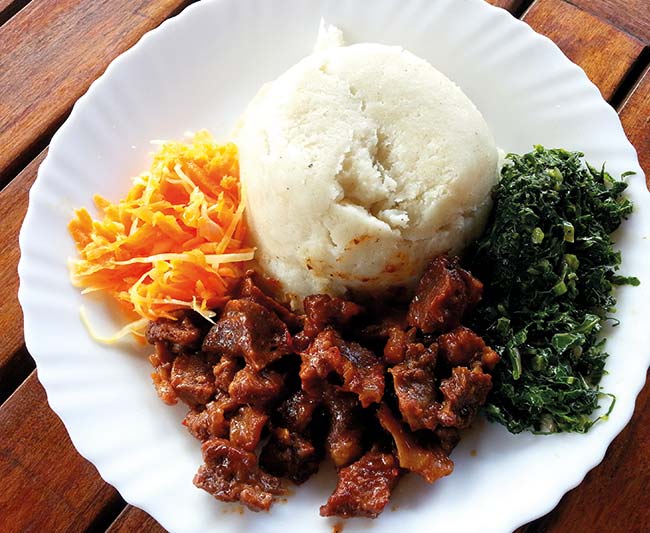
Kenya
Kenyan food is difficult to summarise due to the fact that it varies so much depending on where you are in the country. In the cities you will likely find fragrant curries served with soft rotis whilst on the coast you are more likely to come across fresh seafood of all descriptions. Grain based foods are also a staple throughout the country, such as ugali, a maize flour porridge served with savoury dishes. Barbecued meats, nyama choma, are a popular dish typically saved for special occasions, whilst dishes like sakuma wiki, sauteed vegetables, are more of a daily staple. Given that Kenya is one of the world’s largest exporters of coffee, there are also coffee shops in the larger municipalities that serve top quality cups of beautiful arabica bean coffees.
Something different: Mutura. A popular street food in Kenya, mutura is similar to black pudding. Made using seasoned goat meat and blood, the sausage is boiled and then fried for a filling carnivorous snack.
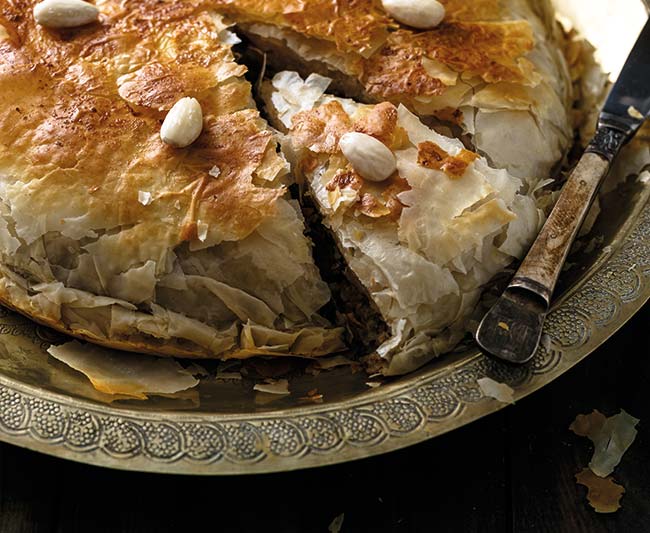
Morocco
Moroccan food is amongst the best renowned in the continent of Africa and with good reason. The staples of tagine - a slow roasted meat stew - and couscous - crushed durum wheat that is steamed and served as a side - have become extremely popular across the planet. Another extremely popular Moroccan staple comes in the form of hummus, a tahini and chickpea based dip which can now be found in just about every supermarket in existence. Another dish that is popular amongst local Moroccans is kefta - delicious meatballs stewed in a fragrant tomato sauce. Afternoons in Morocco are usually a time for drinking one of the many varieties of tea available here, which is a very important part of Moroccan culture that brings people together.
Something different: Bastilla. A delicious meal consisting of shredded chicken and pigeon meat served in a thin pastry crust. The dish, which has Analusian origins, owes its incredible flavour to the manner in which the meat is browned in butter before being placed in the pastry.
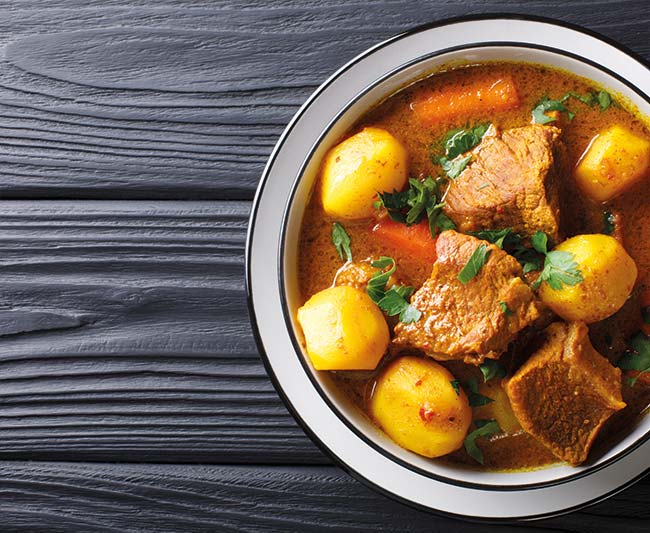
Namibia
Truly traditional Namibian food can be hard to come by as international influences have crept into the local culture. Much of this is due to the influence of German settlers in the early 19th century. Through these missionaries, Namibia has adopted a penchant for creating delicious baked dishes, including apple strudel and Black Forest cake. Due to the country’s desertous landscape, vegetables and fruit are more difficult to encounter, making most menus very meat-focussed. Stews made from a variety of game meats, including kudu or oryx, are abundantly available in restaurants. Germanic and South African influence can also be seen in the popularity of sausages like boerewors in Namibia, which is often served as part of a cooked breakfast.
Something different. Koekister. A fried donut with Afrikaaner origins, this dessert is as deliciously sweet as it is utterly gluttonous. The small balls of fried dough tend to come drenched in honey or syrup.
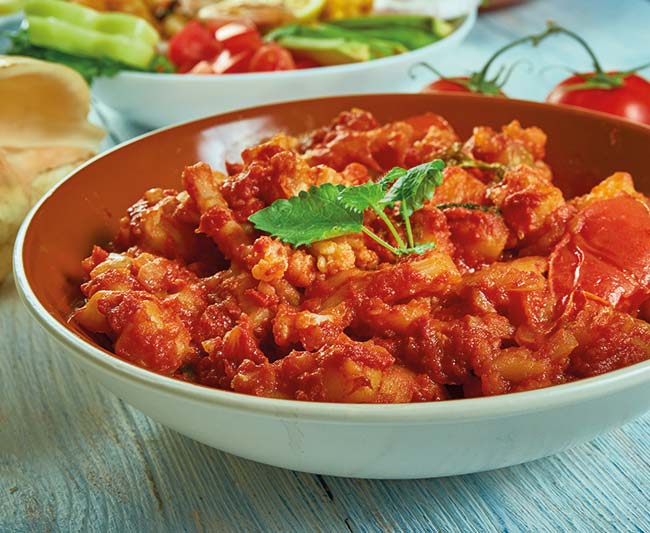
South Africa
A real melting pot of cultures has led to a truly eclectic selection of dishes becoming available in South Africa. European, Indian and Malaysian influences can be seen in the local specialties that fuse the flavours of these cultures into dishes that are as spectacular as they are unique. Perhaps the most well renowned South African snack comes in the form of biltong, or smoked beef or game meat, whose origins trace back to a time when indigenous tribes would dry their meats to preserve them. Meat in general is a popular basis for many meals in South Africa, served in the form of boerewors, spiced beef and lamb sausages, or different game cuts that are typically barbecued at a braai. These originated from a time when butchers would set up communal barbecues in front of their stores to draw customers in and are now a social event in many parts of South Africa. Cape Malay curries originate from Southeast Asian slaves brought over during the French colonial period and fuse Asian flavourings with local produce in a fragrant and spicy curry dish. Those with a sweet tooth should try malva pudding. Much like sticky toffee pudding, the dish uses apricot jam instead of toffee and served with cream.
Something different: Bunny chow. A marriage of eastern and western cuisines, bunny chow is a curry served inside a hollowed out loaf of crusty bread. After devouring the curry within, diners are treated to a sauce-soaked crust that has absorbed all of the sauce’s flavour.
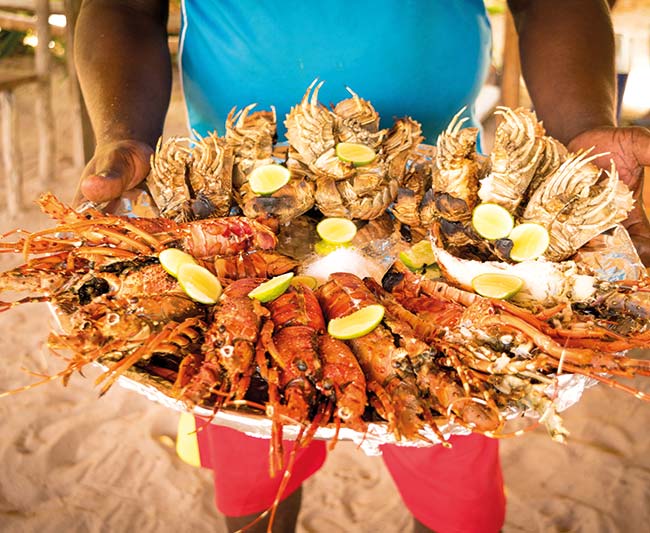
Tanzania
Tanzanian food follows a similar pattern to the cuisine of its neighbouring nations, with a focus on starchy sides and roasted meats. The basis of most Tanzanian meals is ugali - a maize-based side that is also popular in Kenya and Uganda. Typically served alongside vegetables and occasionally grillet meat kebabs, or mishkaki. This is the general theme throughout the nation until you reach the coastline and immerse yourself in the abundant seafood options offered by the Indian Ocean. Curries become more readily available as you approach the sea, with classics like mchuzi wa samaki served in most beachside eateries. An aromatic fish curry with a mild level of spice to it, it is a favourite amongst travellers in Tanzania. The food scene changes again as you cross the water to Zanzibar where tasty dishes like urojo, a spicy soup of potatoes, mangoes and coconut, and mchuzi wa pweza, a curry made with octopus meat, start to become more common on restaurant menus.
Something different: Zanzibar pizza. More similar to a crepe than a pizza in many ways, this dish starts with a thin sheet of dough that is then filled with onion, egg and cheese along with your sauces of choice and fried on a griddle. The end result is a crispy, chewy handful of deliciousness.
Featured Tours



